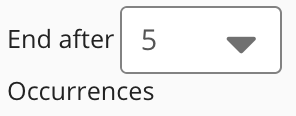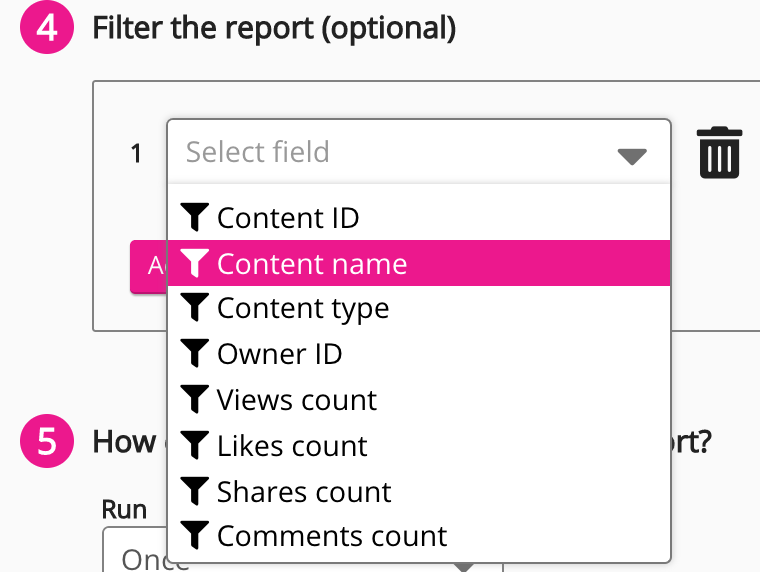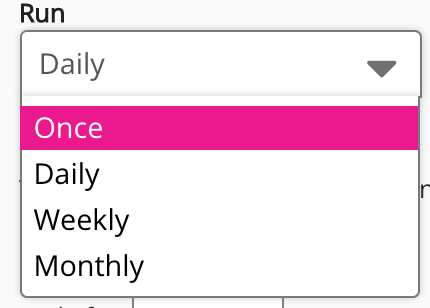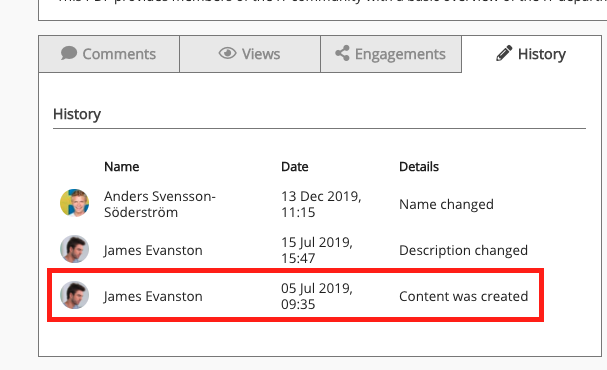The All content report lets you generate a list of content created in a community over a specific period of time. For example, you might want to retrieve a list of all the content created in a particular community between the 1st January 2019 - 1st January 2021.
Below is an example of the All content report:

This section includes:
/*<![CDATA[*/ div.rbtoc1765469509440 {padding: 0px;} div.rbtoc1765469509440 ul {list-style: disc;margin-left: 0px;} div.rbtoc1765469509440 li {margin-left: 0px;padding-left: 0px;} /*]]>*/ Configuring the report Report specific fields
Configuring the report
The All content report screen contains the following configuration fields:
|
Field |
Description |
|---|---|
|
Report title (required) |
Enter the title of the report. |
|
Select a community |
Search for and select the relevant community. You can only generate the All content report for one community at a time. To search for and select a community:
|
|
Include deactivated entities |
Select the Include deactivated entities checkbox to include content from users who previously existed in the community, but whose accounts have been deactivated. Users are typically deactivated by an organisation when they leave. This checkbox is deselected by default.
|
|
Start date and End date |
Select dates from the Start date and End date calendars. For example, you might only include content that was created in the community between two specific dates. These fields are mandatory and you must select a start and end date before being able to submit the report. |
|
Select fields to include in the report |
Select data you want to include in the report/deselect data you want to omit from the report.
All checkboxes in the Select fields to include in the report section are selected by default.
|
|
Filter the report (optional) |
Narrow down the data displayed in the report by selecting one or more available filters.
|
|
How often would you like to run this report? |
Select how often you would like to run the report. Example: You may only want to run the report once, or you might want to run it on a monthly basis to keep track of learning completion for users in the community. From the Run drop down, select one of the following:
If you have selected Daily, Weekly, or Monthly, you can choose to stop the daily, weekly, or monthly creation of the report after a specific number of cycles, by selecting a number from 1-20 in the End after [#] Occurrences dropdown.

Example: If you set the report to run once per month, and you select 5 from the End after [#] Occurrences dropdown, the report will be created once per month for 5 months only, after which Fuse will stop creating the report.
|
|
Who can access this report |
In the Who can access this report section, specify the users or groups that will be able to access this report once it has been created.
Select one of the following:
|
|
Forwarding (optional) |
Notify selected communities, or community members within those selected communities, once the report is created. Select one of the following:
|
When you have finished selecting the options for the report, click Submit in the top-right corner of the screen and the report is created.
Report specific fields
The following standard Fuse data can be included or omitted from the report:
The Date column, which shows the item of content's creation date, cannot be omitted from this report.
|
Field |
Description |
|---|---|
|
Content ID |
The ID of the item of content. |
|
Content name |
The name of the item of content. |
|
Content type |
The content type. For example, Article, Question, Uploaded file, Video, or Scorm Course. |
|
Owner ID |
The user ID of the Fuse user who currently owns the item of content. |
|
Views count |
The number of times the item of content has been viewed in Fuse. If a single user has viewed the item of content multiple times, each view is counted. |
|
Likes count |
The number of times the item of content has been liked. |
|
Shares count |
The number of times the item of content has been shared. |
|
Comments count |
The number of comments that appear underneath the item of content in Fuse. |
|
Unique views count |
The number of unique user views the item of content has. For example, if you have 100 users in the community and all 100 users have viewed the item of content, the count would be 100. |
|
Time |
The time at which the item of content was created. An item of content's creation date and time can been found in the History tab of the Content homepage.
|
|
Community ID |
The ID of the community where the content was created. |
|
URL of content |
The URL of the content, rendered as a clickable link. |
|
Owner name |
The first and last names of the Fuse user who currently owns the item of content. |
|
Owner email |
The email address of the Fuse user who currently owns the item of content. |
|
Owner username |
The username of the Fuse user who currently owns the item of content. |











